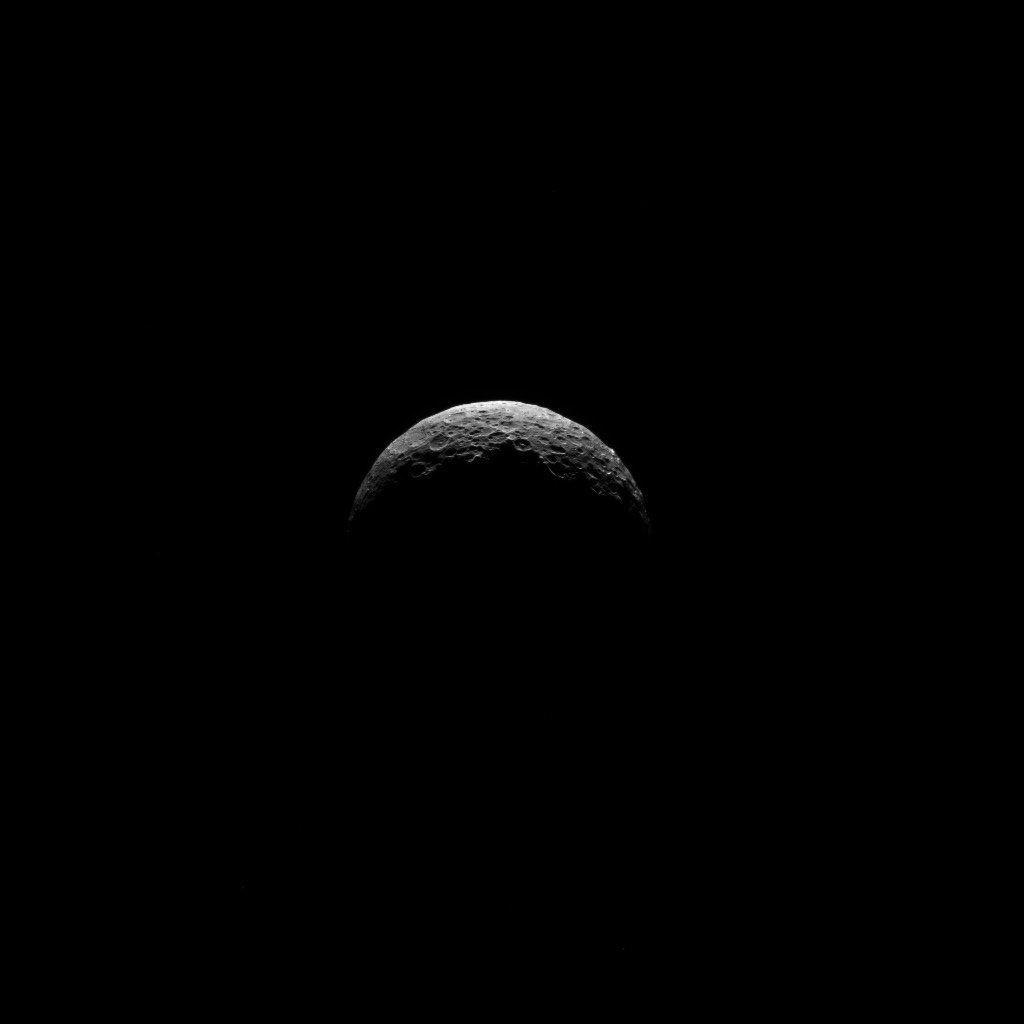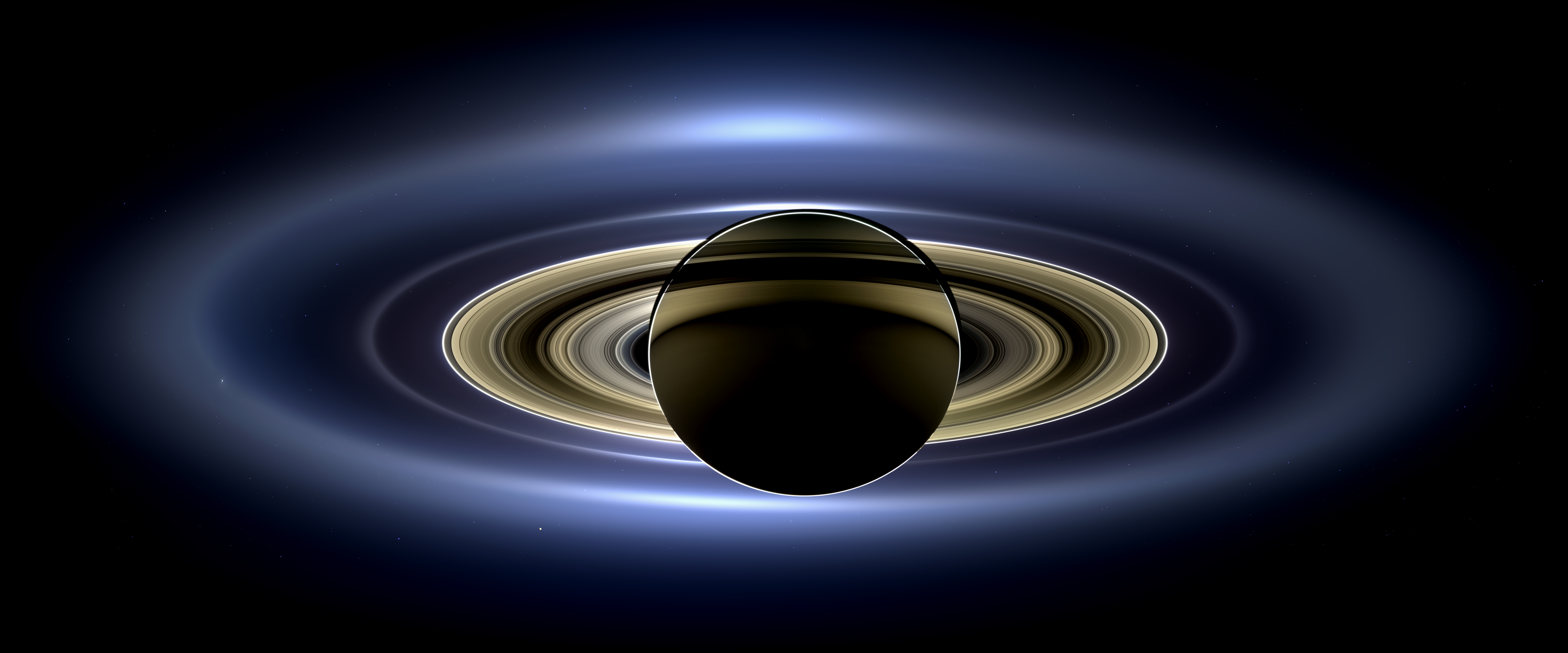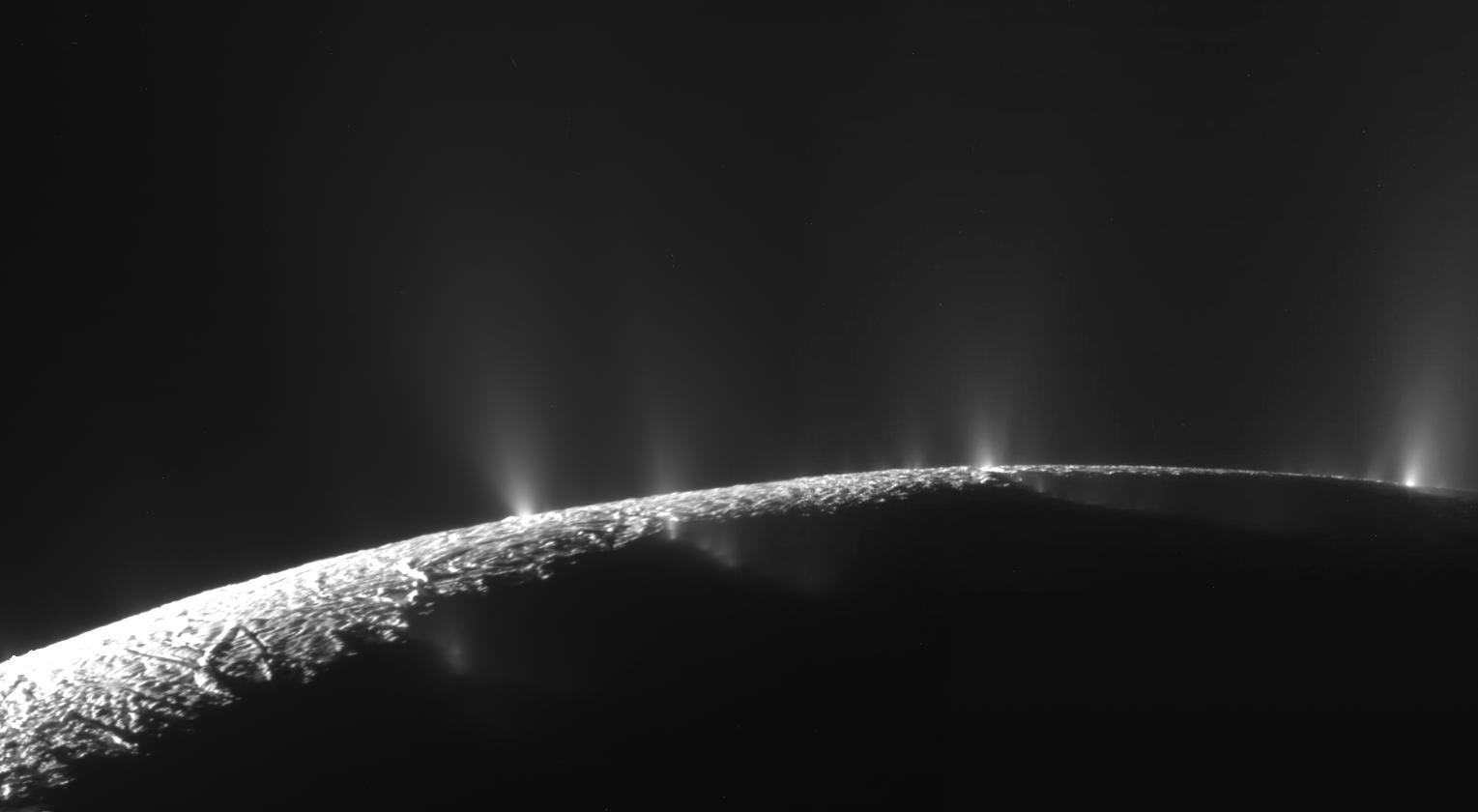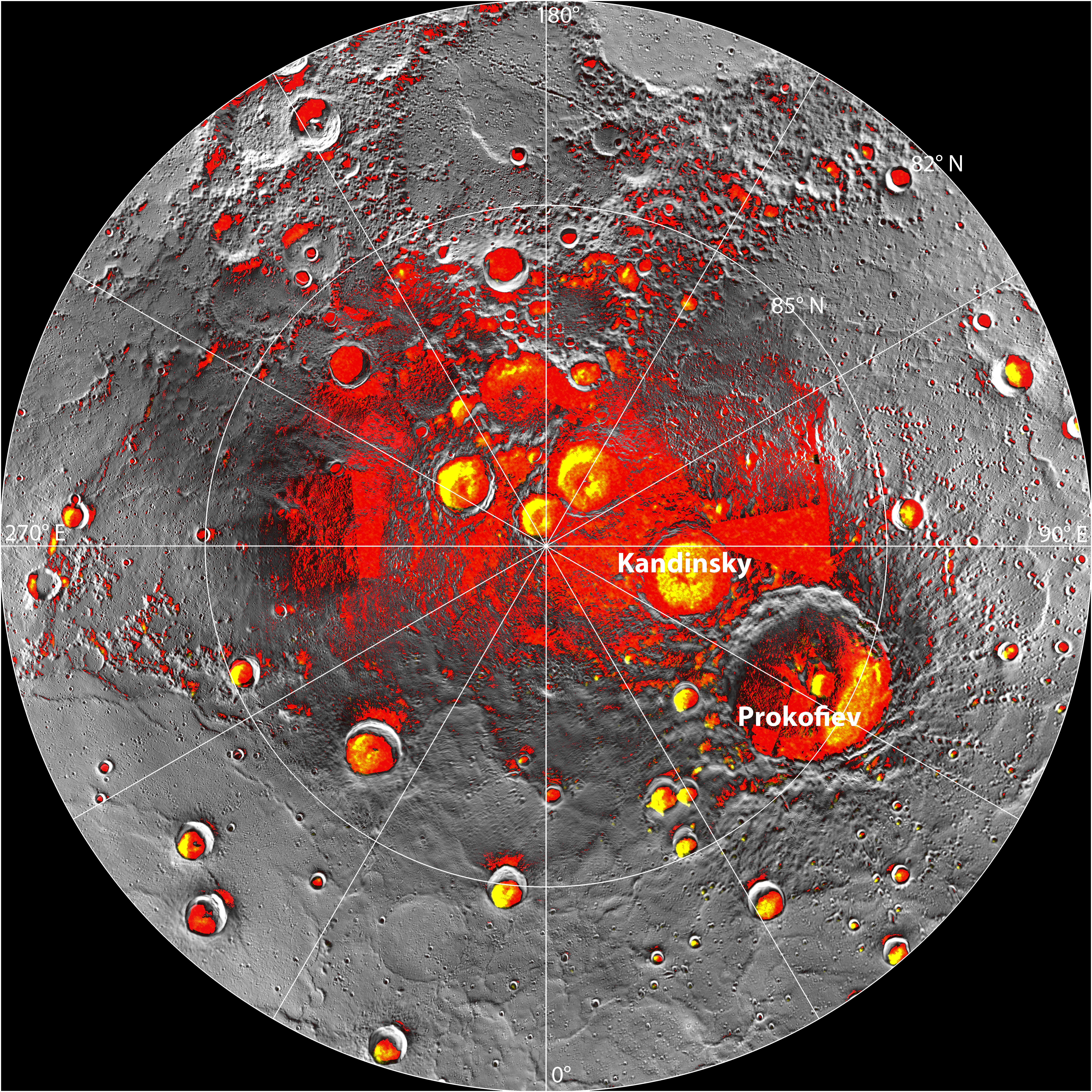The hunt is on for the next big thing in space drives: When ion drive came onto the scene they opened up a whole range of destinations such as Ceres and Vesta for exploration, with their low-thrust-high -fficiency combo. But what's the next step along the road to hyperdrive? Well there are a number of ideas that are trying to do away with one of the fundamental things of a rocket: Propellant.
Why? Propellant is heavy - for every gram of it you carry to make you go fast the more you need more to push it. Take propellant out of the equation and space travel can get a whole lot faster....
Why? Propellant is heavy - for every gram of it you carry to make you go fast the more you need more to push it. Take propellant out of the equation and space travel can get a whole lot faster....
The wild card: EM drive.
You may well have read or heard something about this recently, and I'll be very surprised if you don't hear more about it - be that good or bad. The 'EM drive' is an idea for an engine that consists of a cone shaped box, inside which microwaves bounce from the pointy end to the flat end.
Yes there's more to it than that: There's a magnetron to produce the microwaves, the 'box' is a high Q resonant cavity (high Q means the box doesn't leak microwaves very much, resonant cavity means it traps microwaves of a particular frequency). But basically: Cone shaped box full of bouncing microwaves. Set one of these up and - apparently - it will produce a very tiny force in one direction.
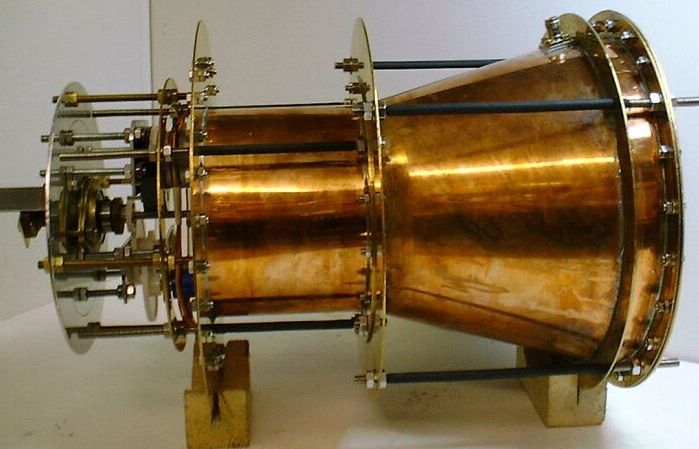 |
| Above: The prototype EM drive. Even NASA isn't sure it works, or if it works. And they've been testing it for years now. That's even longer than the Rubicks cube took them. Courtesy of emdrive.com |
Then more rigorous tests began to eliminate some of the possibilities - conducting a test in a vacuum chamber to eliminate possible air effects is the most recent (here's a blow by blow account of the most recent developments) - and more exotic explanations are being advanced. Amongst these are the cavity interacting with the sea of quantum vacuum particles theorised to permeate the universe, a highly mathematical explanation involving radiation pressure from the discoverer of the cavity effect, and, yes, space warps. For more information, here's the EM drive website
I'm keeping my scepticism up, but I'm also interested to see what explanation eventually emerges, and it would be much more exciting if it was something exotic! Some parts of the scientific community seem to be so upset by this machine (to be fair it does seem to violate conservation of momentum, which is a very basic law) that it's hard not to feel like they're taking what should be an academic, technical, discussion personally.
It might be worth remembering that, while the have been plenty of false alarms (faster than light neutrinos.... anyone remember that?) down the years, some significant discoveries (solar wind, quasi crystals, relativity) were greeted by massive scepticism too. I suggest we keep our sceptical heads on, by stay cool about it all, and make up our own minds based on the evidence that unfolds - rather than being dragged along with the crowd either way.
Space sails:
Sails are a good example of a more down to earth engine that doesn't need a supply of on board propellant. However, unlike the EM drive, they do get their momentum from a well understood source - the wind (even if that wind is a very different one than we have on Earth)....
On Earth moving things by attaching sails to them and catching the wind is such a good idea that it's still around today. True, in the last hundred years the reliability of the internal combustion engine has edged out the sail for large ships, but for pleasure the sail still has a multitude of very cool applications...
Sails are a good example of a more down to earth engine that doesn't need a supply of on board propellant. However, unlike the EM drive, they do get their momentum from a well understood source - the wind (even if that wind is a very different one than we have on Earth)....
Above: NASA explains solar wind, and how it effects Earth.
On Earth moving things by attaching sails to them and catching the wind is such a good idea that it's still around today. True, in the last hundred years the reliability of the internal combustion engine has edged out the sail for large ships, but for pleasure the sail still has a multitude of very cool applications...
Above: Sail doesn't have to be slow, or work only on the water - the Greenbird land yacht reached 126 mph under sail power.Courtesy of Yachtpals.com
So what's the point of a sail in space? Space is a vacuum right?
Right...ish. Space does actually have stuff in it - mainly electrically charged (ionised) gas. It's very thinly spread, but moves at very, very, high speeds. This ionised gas makes up the solar wind - a non stop gale, blowing from the Sun. It averages 400,000 meters a second, and can reach up to 750,000 meters a second - ten to twenty times faster than our fastest spaceships.
The important phrase is 'electrically charged': Electrically charged things will repel off of other electrically charged things with the same kind of charge, which gives us a nice recipe for a sail that can catch the solar wind: A long wire with the same charge sign as the wind itself will do the job.
So that's what a number of groups are working to build - a small lightweight craft with long trailing wires that unreel to catch the solar wind. One of them, called Aalto-1, would not only be one of the first solar wind sails, but also Finland's first home grown student space satellite!
The important phrase is 'electrically charged': Electrically charged things will repel off of other electrically charged things with the same kind of charge, which gives us a nice recipe for a sail that can catch the solar wind: A long wire with the same charge sign as the wind itself will do the job.
So that's what a number of groups are working to build - a small lightweight craft with long trailing wires that unreel to catch the solar wind. One of them, called Aalto-1, would not only be one of the first solar wind sails, but also Finland's first home grown student space satellite!
Above the Aalto-1 satellite project, a mission hoping to be the first operational solar wind sail.
Although I've been following the development of this technology for a while, I hadn't realised that there has been one, Estcube, that already launched - the satellite succeeded in communicating with Earth but was unable to confirm the wire rolled out successfully. Not bad, considering that this was the first ever Estonian satellite.
Still, there are limits to what speed a solar wind sail could reach: it would take thousands of years to reach another solar system (a big improvement over tens of thousands with or current engines, but still) so we'll eventually need something a bit faster
Light sails:
Which brings me to the other kind of space sail: Photon sails. Photons are particles of light, and they carry momentum - so when they bounce off something they exert a very, very, small force on it. If you attach a huge, reflective, lightweight, sail to your spaceship you can catch enough of that push to gradually build up speed. The process is slow, but (in principle) over time the only maximum limit is lightspeed, as that's how fast the photon 'wind' is going. In reality you'd need to turbo charge the sail by shining a laser on it to get to a significant fraction of lightspeed, but that's still a lot less energy intensive than getting up to that sort of speeds by rocket.
....
Above: Why it's possible to use light the same way we use wind - the long version, so put the kettlê on. Courtesy of JAXA.
...Of all the emerging propelentless technologies this is by far the best tested - Japan launched a successful prototype called IKAROS not too long agoand the Planetary Society plan to launch a miniature sail powered craft called lightsail-1...
Above: Lightsail 1. Courtesy of the Planetary Society.
Elsewhere in the universe:
New Horizons finds Pluto has ice caps!:
The New Horizons space probe has finally gotten close enough to Pluto to see more details than Hubble - it's first find seems to be an ice cap (probably of nitrogen ice). Here's the press conference on the preliminary results:
Elsewhere on the internet:
Mercury probe dies in a blast of light
Russia abandons out of control spacecraft:
Secret rocket launch by Blue Origin:
Mathematical analysis hints at unknown physical process happening on the Sun:
Cosmic rays allow electric fields in thunderstorms to be studies.










